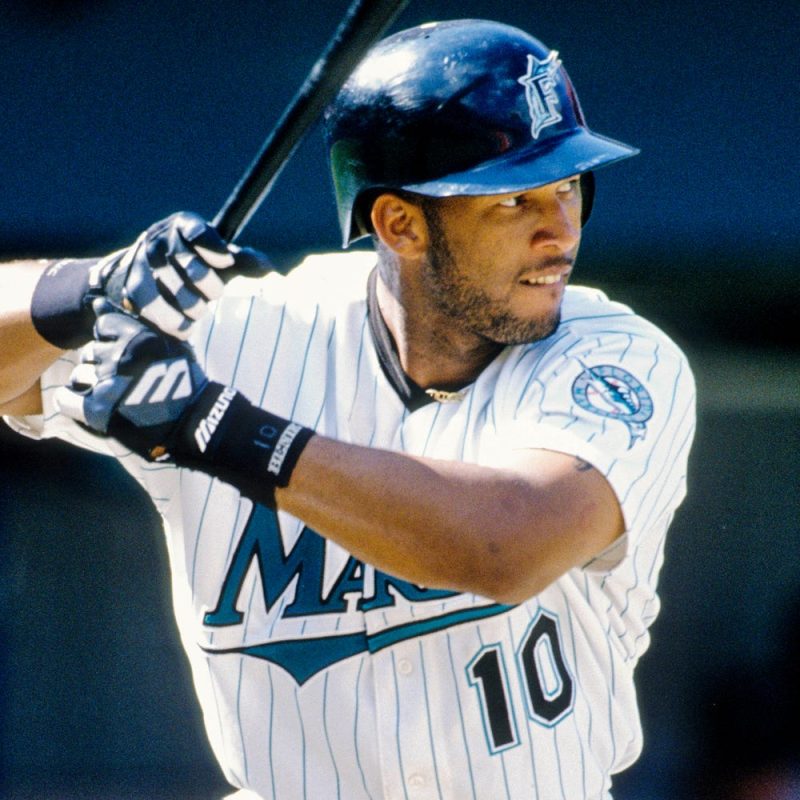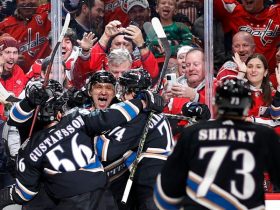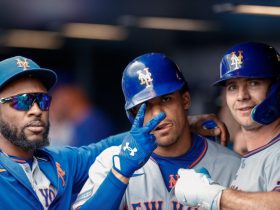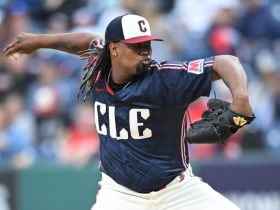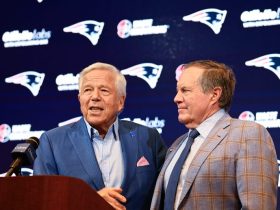One of the most fearsome hitters to ever step into a batter’s box, Gary Sheffield’s fierce bat wiggle and violent swing signaled his aim was not simply making contact with the baseball. He wanted to pulverize it.
That’s just what he did for 22 seasons after reaching the majors in 1988 at the age of 19. The No. 6 overall pick in the 1986 draft by the Milwaukee Brewers, Sheffield collected 2,683 hits and blasted 509 home runs over the course of his career. But unlike most power hitters, he had remarkable plate discipline, walking more times than he struck out.
Sheffield posted a career slash line of .292/.393/.514, winning a batting title in 1992, leading the National League in on-base percentage in 1996 and being selected to the All-Star Game nine times. A five-time Silver Slugger winner, Sheffield never did win an MVP award, but he finished in the top 10 six times – including third in 1992 and 2004 and second in 2003.
However, his poor defensive skills made him a liability in the field as he transitioned from the infield to the outfield early in his career and finally, after spending his first 17 seasons in the National League, to designated hitter.
Due in part to his defense and his explosive personality, Sheffield played for eight different teams before finally calling it quits following the 2009 season.
Why Sheffield belongs in the Hall
His rare combination of power and on-base percentage made Sheffield an imposing presence in any lineup.
In addition to being one of only 28 players in history to hit 500 or more home runs, Sheffield also ranks among the top 40 all-time in walks (21st with 1,475), RBI (30th with 1,676) and runs scored (39th with 1,636).
Though he doesn’t have an extensive postseason resume, Sheffield was one of the cornerstones of the Florida Marlins’ first World Series championship team in 1997, hitting .320 with a .521 on-base percentage and .540 slugging percentage in 16 postseason games as the Marlins defeated Cleveland in seven games.
Why Sheffield has fallen short
In short, his defense was terrible. And his teams tried their best to limit the damage he could do.
He finished his career with 60.5 Wins Above Replacement, a figure that’s dragged down considerably by his struggles in the field and puts him 10.6 wins below the average Hall of Famer, according to FanGraphs’ Jay Jaffe.
Sheffield also gets dinged by his connection to performance enhancing drugs through the Mitchell Report and the BALCO scandal. Even though he never tested positive for PEDs, he did admit to a grand jury that he unknowingly used a steroid cream provided by Barry Bonds’ personal trainer before the 2002 season.
Voting trends
Sheffield enjoyed a sizable bump in voter support from 2019 to 2021, but held steady at 40.6% overall last year.
This year, Sheffield’s ninth on the ballot, marks the first time he won’t have to share it with Bonds and Roger Clemens. So it’s possible he won’t be lumped in with others associated with PEDs and voters could be more willing to consider Sheffield on his own merits.
Among the 156 public ballots revealed so far on Ryan Thibodaux’s Hall of Fame tracker, Sheffield has received support on 65.4% of them.
Previous results:
2015: 11.7%2016: 11.6%2017: 13.3%2018: 11.1%2019: 13.6%2020: 30.5%2021: 40.6%2022: 40.6%
Will Sheffield ultimately get elected?
Candidates in their final years on the ballot usually see some increase in support, and Sheffield appears to be following that trend. With Barry Bonds, Roger Clemens and Curt Schilling no longer eligible, Sheffield received the fifth-highest vote total among this year’s returning candidates.
However, it may not be quite enough. As we saw with Bonds, there’s still a sizable bloc of voters who prefer to keep anyone associated with PEDs out of the Hall. And Sheffield could suffer in comparison to newcomer Carlos Beltran, who was a much better fielder and has a higher career WAR.

